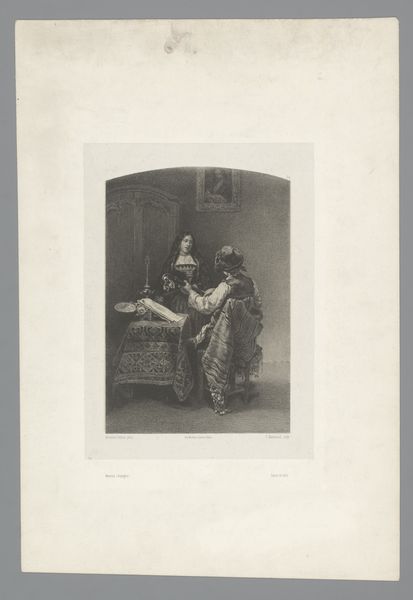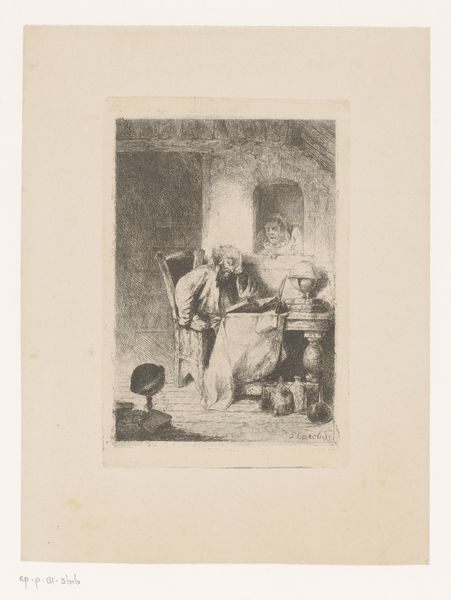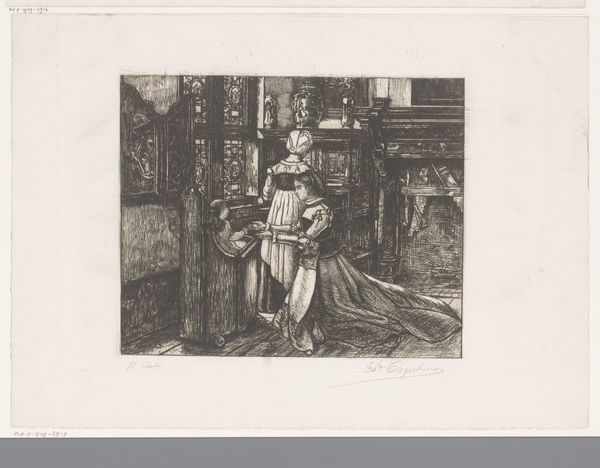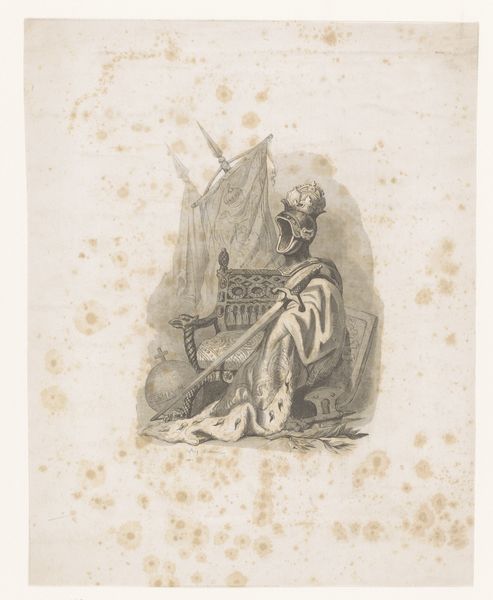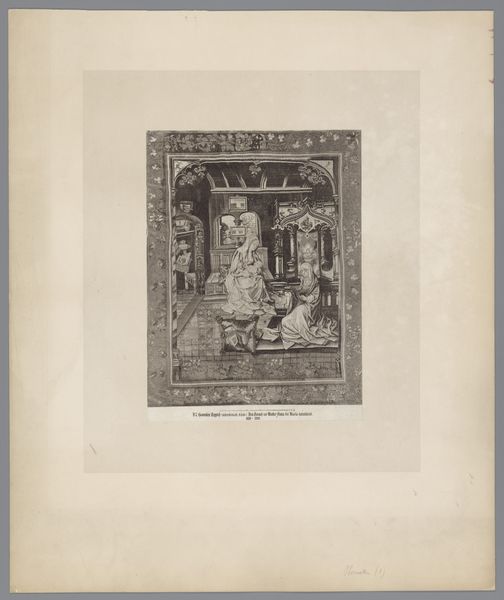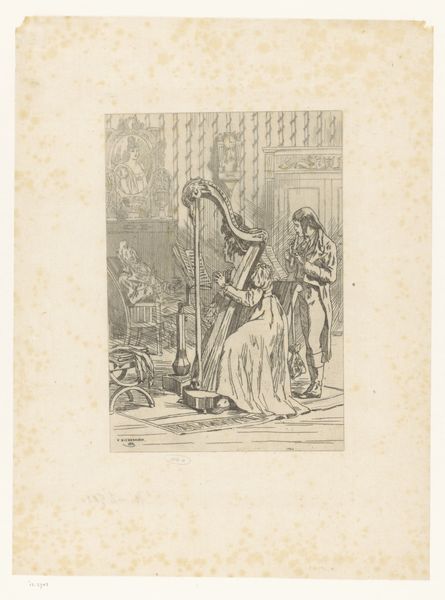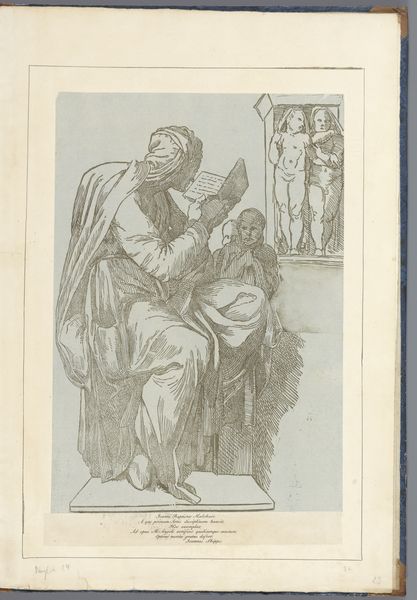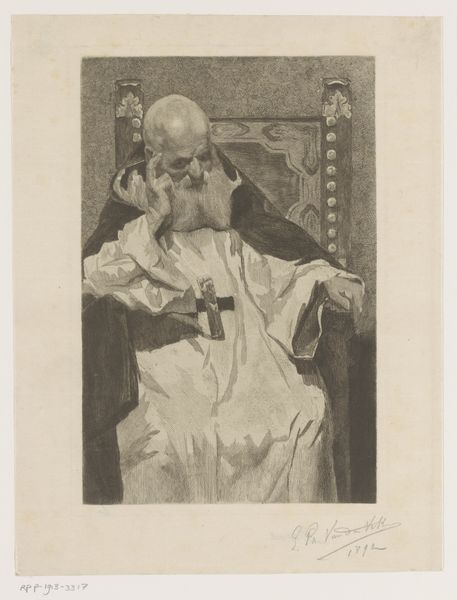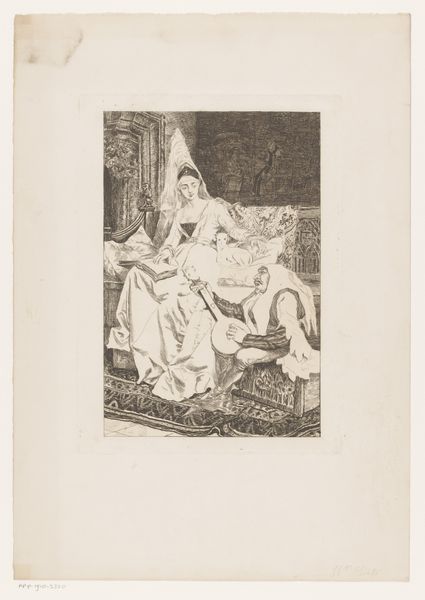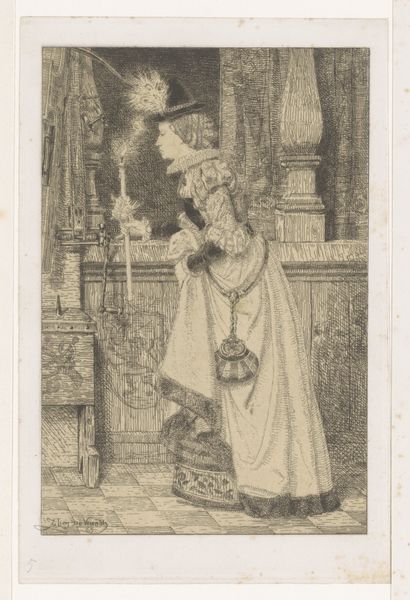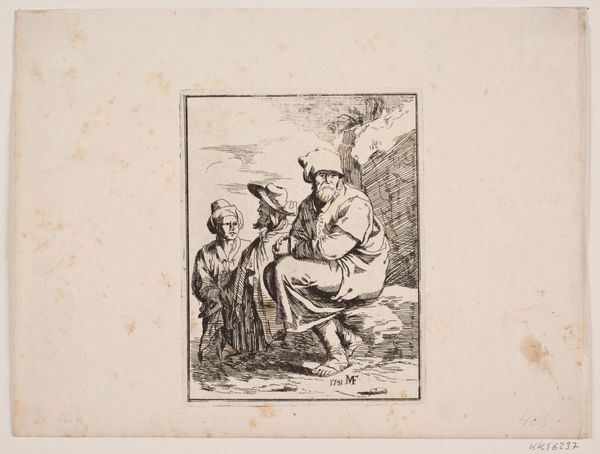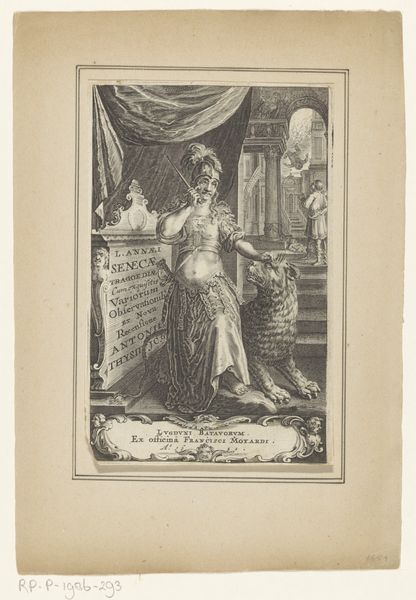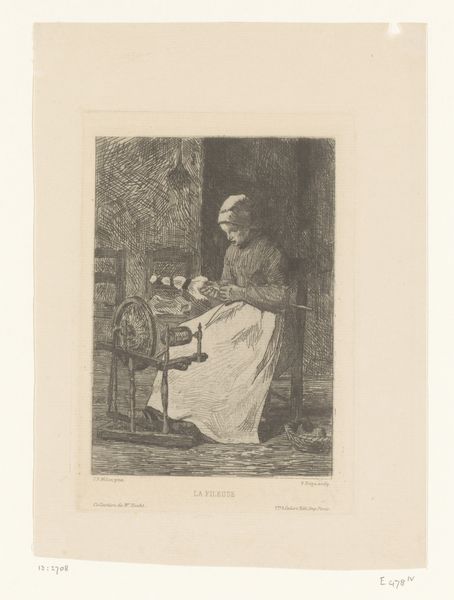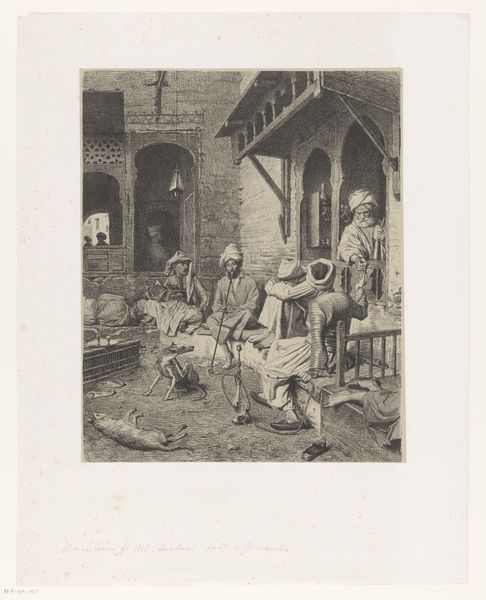
drawing, ink
#
portrait
#
drawing
#
ink
#
orientalism
Dimensions: height 406 mm, width 302 mm
Copyright: Rijks Museum: Open Domain
Editor: Here we have Anton Molkenboer's "Abdülhamid II met minister," a drawing in ink, created sometime between 1896 and 1898. It has a distinctly satirical feel. What's your take on this piece? Curator: The lens of Orientalism is crucial here. This drawing, created by a Western artist, depicts an Ottoman Sultan, placing him within a framework of European perceptions of the "East." How do you think that shapes the narrative being presented? Editor: Well, I guess the Sultan is being portrayed in a rather…lazy manner, almost decadent. And there’s the hookah, the ornate setting. It feels like a stereotypical depiction. Curator: Precisely! Consider how power dynamics play out. The drawing reduces a complex historical figure to a caricature, reinforcing Western dominance through visual representation. Think about how that portrayal might have been received in the political climate of the late 19th century. Editor: So it’s not just a portrait, but a statement on European power and the perceived weakness of the Ottoman Empire? Curator: Absolutely. It’s about constructing a narrative. Look at the minister presenting a document, seemingly pleading with the Sultan. How does that interaction contribute to the overall message about governance and authority? What assumptions does it make about their society? Editor: I see what you mean. It suggests incompetence or disinterest on the Sultan's part, which, in turn, justifies a Western gaze of superiority, or intervention, perhaps? Curator: Exactly! Analyzing the layers of Orientalist representation uncovers how visual art actively participates in the construction and perpetuation of power imbalances. It invites us to challenge those representations. What did you think? Editor: That really puts the artwork into a completely different context for me. Thanks for sharing this insight.
Comments
No comments
Be the first to comment and join the conversation on the ultimate creative platform.
